PaySpace Magazine has compiled a selection of the most technologically advanced smartphones of our time, supporting blockchain technology, biometrics and crypto wallets, advanced cameras and screens of unusual design
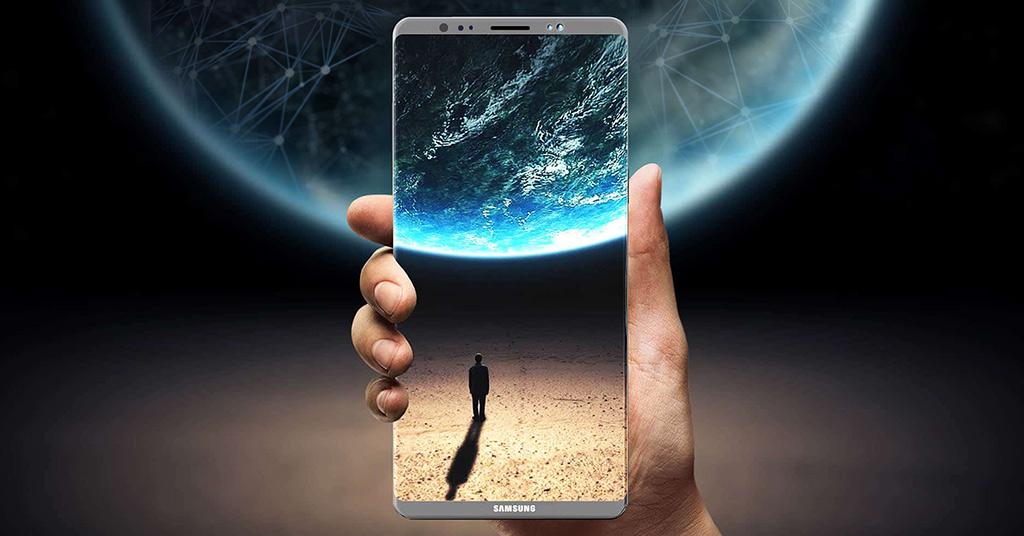
From biometrics to mPOS terminals: The most technologically advanced smartphones of our time.
According to a study by the GfK Group, from January to June 2019, consumers around the world bought smartphones for a total of 210 billion euros. Users are expected to spend about 1 trillion euros in 2019 on various technological innovations. More than 43% of this amount will be spent on the purchase of smartphones with higher specifications.
The PaySpace Magazine editors have made a selection of the most technologically advanced smartphones of our time, supporting blockchain technology, biometrics and crypto wallets, advanced cameras, screens of unusual design and more.
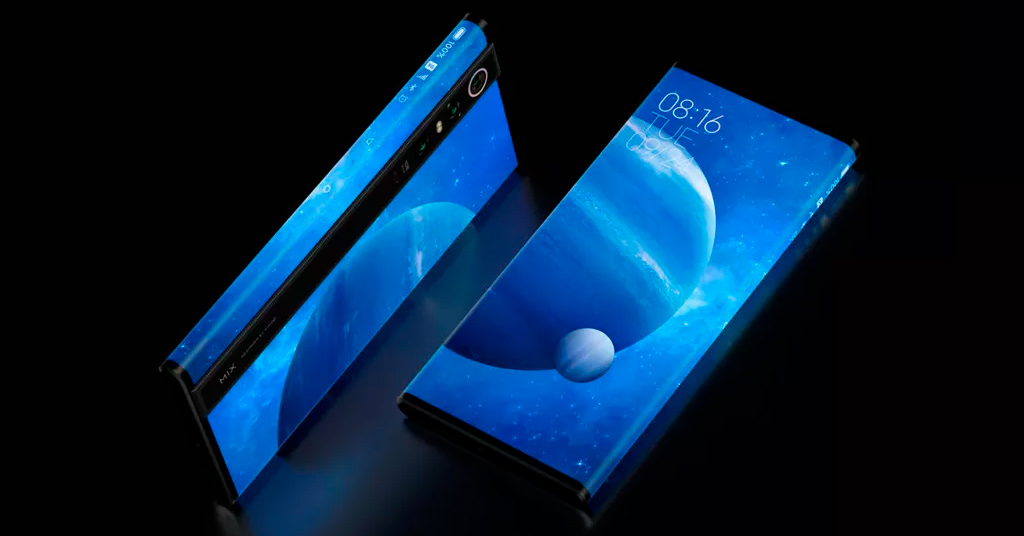
New Xiaomi smartphone with a "wrapped" screen.
The Chinese company Xiaomi has presented a concept smartphone Mi Mix Alpha. The peculiarity of the device is the screen "wrapped" around the body, the area of which is 180% of the size of the phone. The new Mix Alpha is equipped with a 108-megapixel image sensor Samsung, developed in conjunction with Xiaomi. As with other recent high-resolution Samsung sensors, pixels are combined into 2x2 squares to provide better low-light sensitivity, allowing the camera to produce 27MP images. Other characteristics of the phone include a Qualcomm Snapdragon 855+ processor, 5G support, 12 GB of RAM, 512 GB of physical memory, and a 4050 mAh battery.
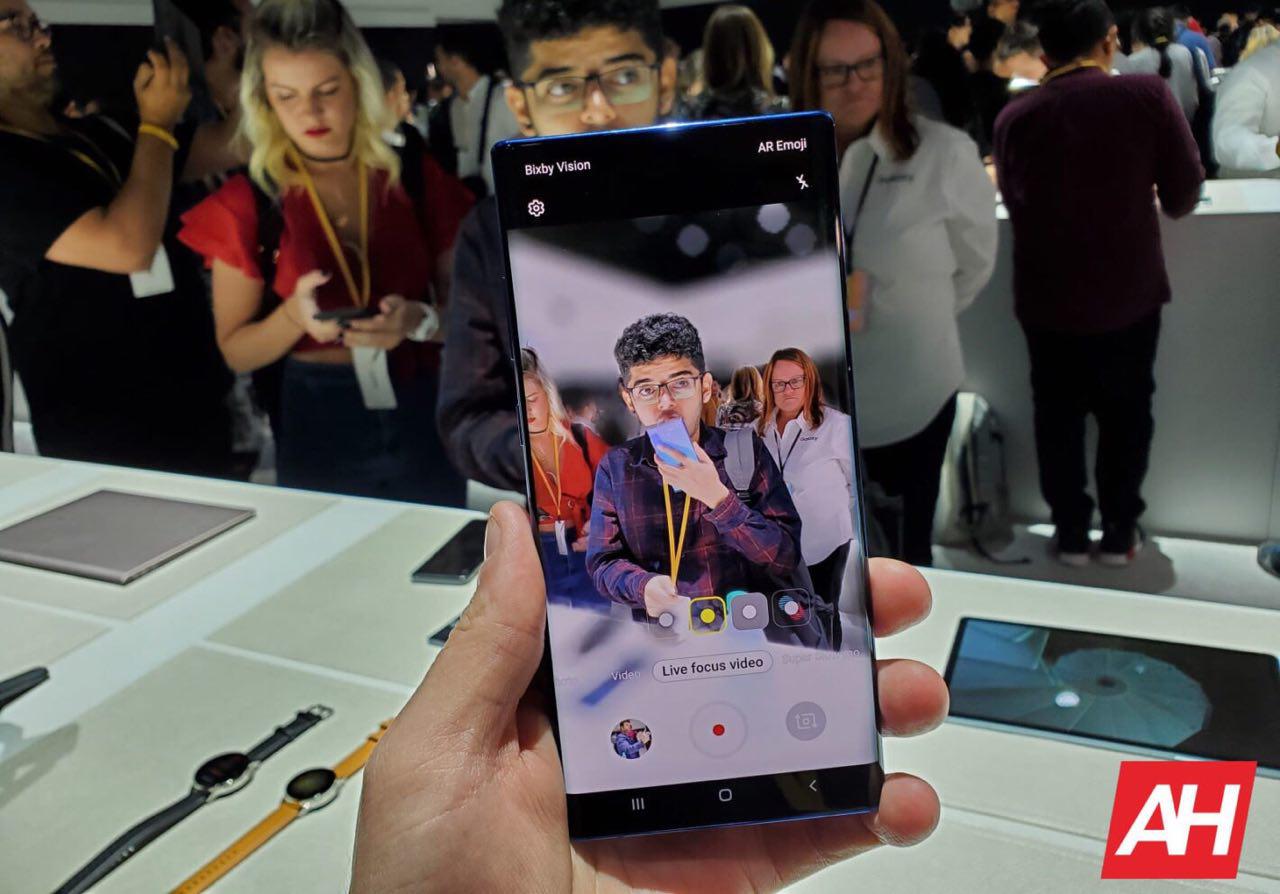
3D photo from Galaxy Note 10 Plus.
The flagship Galaxy Note 10 Plus is equipped with two 12MP and 16MP cameras, as well as an additional 3D TOF camera with a depth sensor. In particular, the TOF camera provides functions for 3D scanning of objects and rapid measurement of objects with the camera.
While Red has introduced a separate 2.7kg Lithium 3D camera for its Hydrogen One smartphone, the Galaxy Note 10 Plus boasts a built-in device.
By the way, the South Korean company became the first manufacturer to release a mobile phone that could create 3D images. All thanks to the dual camera, which was equipped with the Samsung SCH-B710, released in 2007.

Samsung Galaxy Fold smartphone with foldable screen.
On February 20, Samsung unveiled a foldable smartphone at its Galaxy Unpacked event. Thanks to the unique Infinity Flex display, the Galaxy Fold can be flexed. This allows you to turn your phone into a small tablet by simply opening the device like a book.
When folded, the thickness of the smartphone is 17 mm, and when open, it is 6.9 mm. The phone is powered by two batteries, the total capacity of which is 4380 mAh. Another feature of the device is the presence of six cameras, which are located on three sides - the standard front and back, when the smartphone is folded, and another camera is located on the inside of the device when open.
The Chinese corporation Royole became a pioneer in the production of flexible displays. Back in early 2019, the company unveiled the FlexPai phone, the world's first smartphone with a foldable AMOLED display. The device has a 7.8-inch diagonal and runs on the Android operating system. If the AMOLED display is folded down, there is still a small gap between the two halves of the screen, and all content will move to one side of the display.
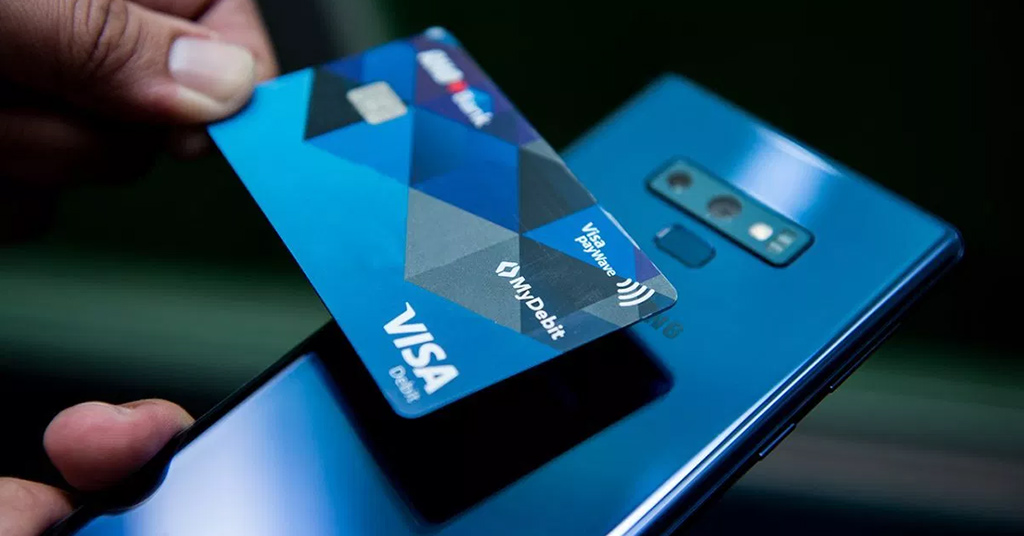
Samsung has turned its smartphones into POS terminals.
South Korean company Samsung has launched Samsung Pay Touch, but it is only available to small businesses in Canada. The app turns Galaxy smartphones into POS terminals that can accept contactless payments. In general, the new function is focused on the commercial segment.
The biggest benefit of Samsung Pay Touch is that no additional hardware is required to install it. Merchants need to have a Galaxy smartphone, download the app, and register. Note that the list of smartphones that support the app includes the Galaxy S8 / S8 +, Note8, S9 / S9 +, Note9 and S10e / S10 / S10 +, and the Galaxy Note 10.
In addition, Samsung is currently working with Visa and Fiserv First Data's credit card business to jointly develop a system that will allow merchants to accept contactless payments of any amount directly to their smartphones. At the same time, sellers will not need to use additional equipment.
It is also reported that by the end of 2019, the Payment Card Industry Security Standards Council (PCI SSC) will introduce a standard for accepting contactless payments from a smartphone. Thanks to this, merchants will soon be able to accept payments by cards and NFC gadgets from their phones or tablets. A similar solution was launched in Ukraine, but it does not depend on the model of the smartphone on which it is used.
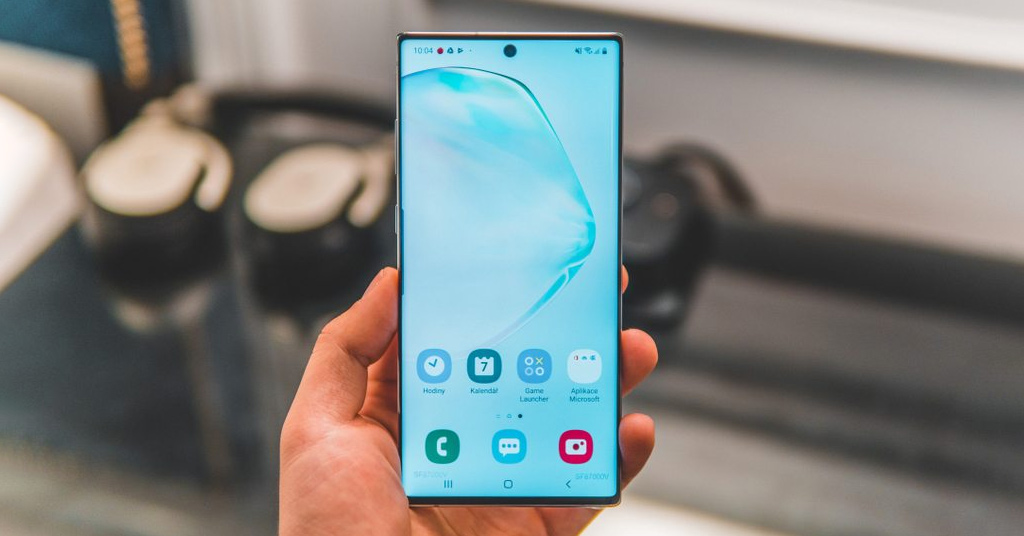
Blockchain smartphone Samsung.
Tech giant Samsung has released a new blockchain-enabled KlaytnPhone smartphone. The device is already available for purchase in South Korea. The phone was reportedly co-developed by Samsung with Ground X, a subsidiary of the Kakao messaging app, which recently launched the Klaytn blockchain. KlatynPhone is a version of Samsung's flagship Galaxy Note 10 phone, but comes with a cryptocurrency wallet installed, DLT-enabled apps, and free KLAY tokens.
In 2019, Sirin Labs, founded by Kazakh investor Kenas Rakishev, released the Finney crypto smartphone announced a year earlier. Sirin Labs Finney has a built-in hardware wallet powered by Sirin OS, an operating system that is a modified version of Android 8.1. Other advantages include decentralized storage. The smartphone uses the so-called "cold wallet", which does not need an Internet connection and which can be, for example, flash drives.
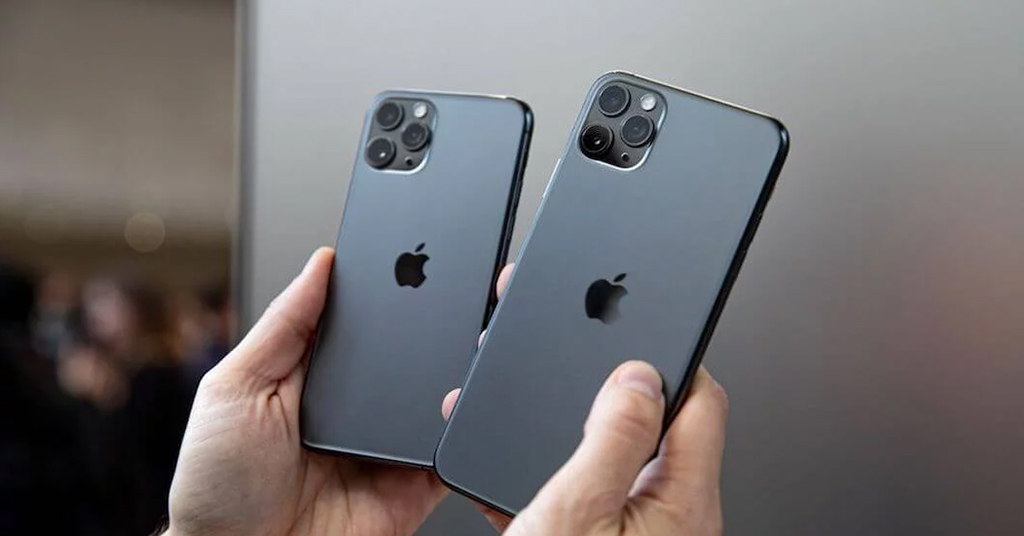
IPhone 13 Pro and Pro Max smartphones.
The new iPhone 13 Pro and Pro Max smartphones feature Deep Fusion, which uses machine learning to enhance low-light shots. When photographing, this technology takes several frames, and then combines them into one image to capture as much detail as possible. In addition, the company recently introduced a new option that allows American students to add their ID cards to Apple mobile wallets. This feature is supported by iPhone 6 and 6 Plus smartphones and newer models.
Today, many modern smartphones have biometrics. This system includes various methods of recognizing people - from fingerprint identification to scanning the face and cornea of the owner of the phone.
So, the Beebom website, in March 2019, presented its top best devices with face recognition function 17 devices, including: Apple iPhone XS, Huawei Mate 20 Pro, OnePlus 6T, Poco F1, Asus ZenFone 5Z, Realme 2 Pro, Honor 10, Samsung Galaxy S9 / S9 +, Oppo Find X, Samsung Galaxy A8 +, LG V30, LG G7 + ThinQ, Samsung Galaxy Note 9, Redmi Note 6 Pro, Vivo V9, Huawei P20 Pro and P20 Lite and Asus ZenFone Max Pro M1.
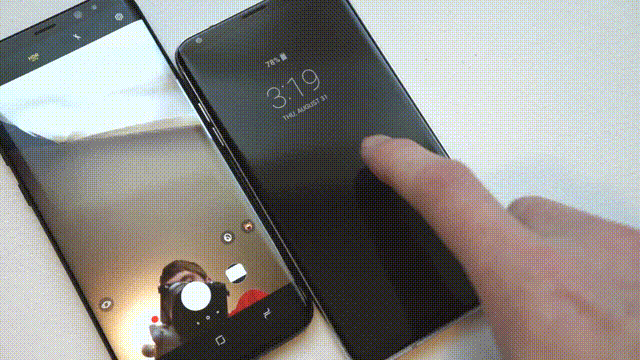
Face recognition function LG V30.
New Apple iPhone 13 and iPhone 13 Pro, which went on sale on September 20, also have Face ID technology. According to the developers, this type of authentication has been improved and now works 30% faster. Due to facial recognition technology, newer iPhones lack a fingerprint reader.
Retinal scan authentication is supported by smartphones of brands Samsung, Nokia, Lumia, LYF, Tecno, HTC, Itel and TCL, in particular: Nokia A1 Plus, LYF Earth 2, Tecno Phantom 6 Plus, Microsoft Lumia 950 XL and 950 XL Dual SIM , HTC U12, TCL 560, Microsoft Lumia 950, Itel SelfiePro it1520 and Samsung Galaxy Note 10, Galaxy Note 9, Galaxy Note 8, Galaxy Note 7, Galaxy S9 and S9 Plus, Galaxy S8 and S8 Plus, Galaxy Note Fan Edition, Galaxy S10 X as well as Galaxy S8 Active.
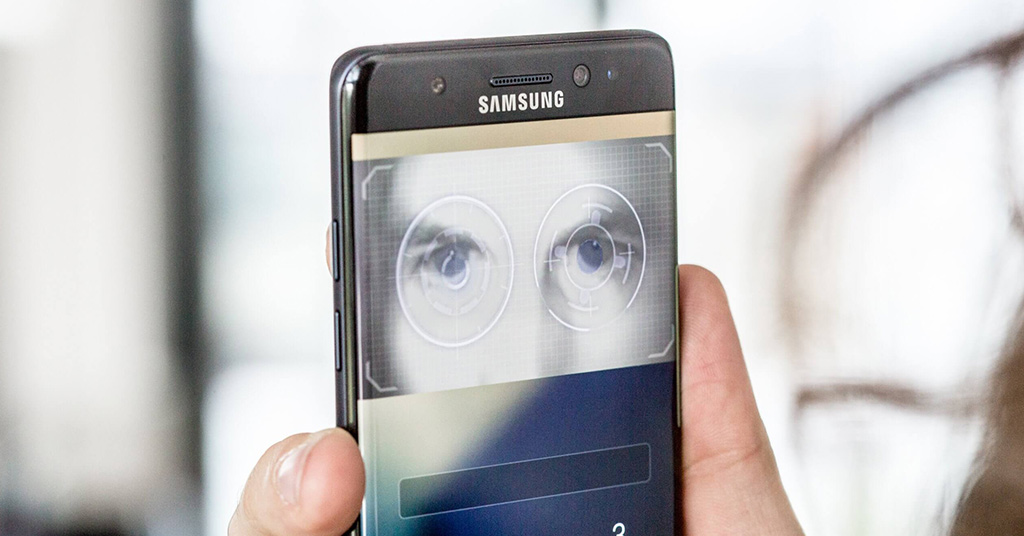
Retinal scan on Galaxy Note 7.
The fingerprint reader can be located on the front (all iPhone models from 5S to 8/8 +), back (LG V10, Samsung Galaxy S5 Mini, Galaxy S8 and Galaxy S8 +) or side (Moto Z3 Play) of the device, or be built into the screen smartphone. Also, some models use ultrasonic fingerprint sensors for authentication (Samsung Galaxy S10).
Other phones that support fingerprint biometrics include Google Pixel 3 XL, Apple iPhone Xs Max, Apple iPhone Xr, Xiaomi Poco F1, Samsung Galaxy Note 9 SD845, LG V10, OnePlus 6, OnePlus 7T, Sharp Sense3 Plus, Sharp Sense3, Xiaomi Redmi 8A, Sharp Aquos Zero2, Vivo U3x, Vivo U10, Xiaomi Mi MIX Alpha, etc.
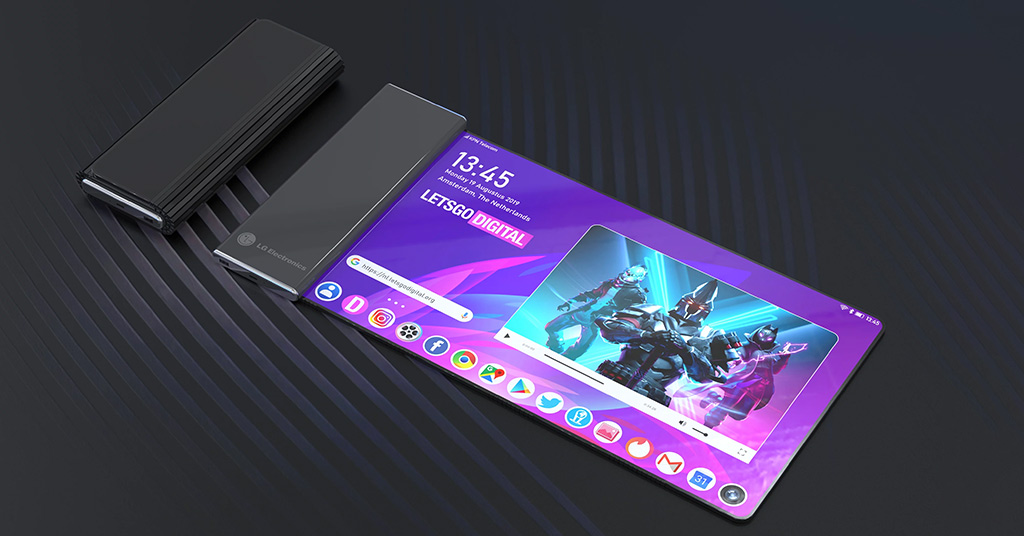
LG has patented a smartphone with a flexible display.
LG smartphones with flexible display, 16 cameras and crypto wallet. In 2019, South Korean tech giant LG patented a flexible display smartphone. The company sent the corresponding application back in October 2018, and in September it became known that in the near future LG will release a blockchain smartphone. In particular, at the end of July 2019, LG representatives announced that the company was working on the creation of a cryptocurrency wallet and applied for the registration of the ThinQ Wallet trademark.
In addition, a year earlier, the company filed a patent for the production of a smartphone equipped with 16 cameras with different curvatures. The main goal of the technology is to create a moving image captured by multiple lenses.
Solar powered phone. The Chinese company Xiaomi has patented a frameless smartphone with a built-in solar battery . The device is located at the back of the phone and occupies a fairly large panel area.
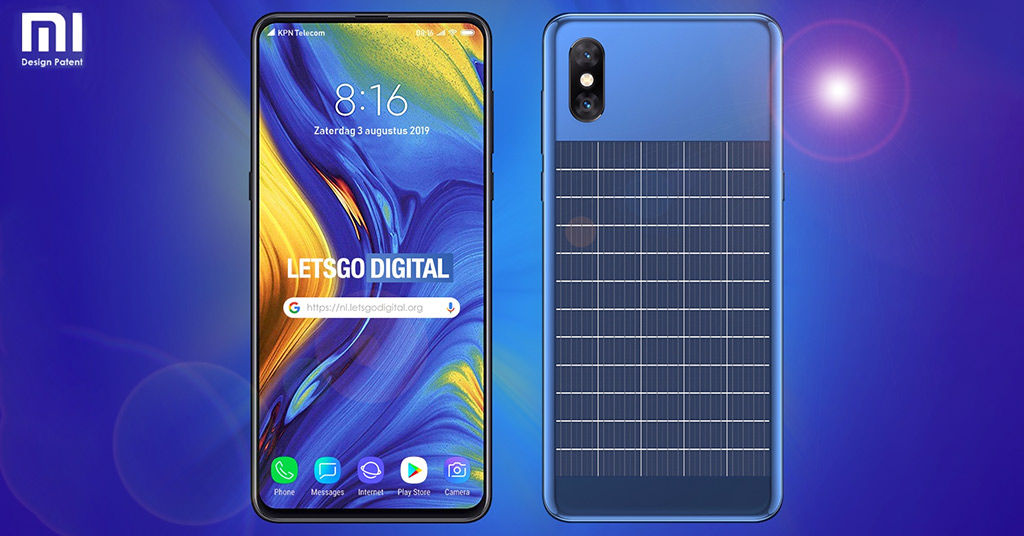
Samsung solar-powered smartphone concept.
Recognition of silent speech. In the fall of 2018, a voice assistant for smartphones was announced that can recognize speech by lip movements, even when a person is not making sounds. The project, developed by Chinese scientists from Tsinghua University, was created using two neural networks. One neural network monitors the position of 20 control points describing the shape of the lips and the level of mouth openness using the built-in smartphone camera. The second one uses all the information received for speech recognition. At the moment, the application supports 44 commands.
Smartphone with three displays. Samsung has patented another unusual smartphone design - a phone with three displays located one behind the other. The smartphone consists of three identical parts, connected by a metal rod that allows the displays to be rotated left and right. At the same time, buttons or cameras were not noticed on the smartphone, and the back panel is completely smooth. There is a hole for the earpiece on the front panel. Despite the registration of the patent, it is still unknown when such a gadget will go on sale.

Samsung smartphone with three displays.
Smartphones will become so popular that by 2024, about 3 billion people, or 40% of the world's population, will use digital ID cards downloaded to mobile phones, according to a report by British research firm Juniper Research.
Another study claims that mobile technology has a major impact on the growth of financial inclusion in the world. Thus, according to the Mastercard company, 15 countries account for more than 60% of the financially excluded population. Among them, 607 million people are mobile phone owners who still do not have a bank account. Thus, thanks to mobile technologies, a large part of the population can easily access the benefits of financial inclusion.
However, the largest mobile phone maker does not share the positive outlook for the smartphone c. So, according to the head of Samsung Electronics Ko Dong Jin, the innovative product of Samsung Galaxy Fold may be the beginning of the end for smartphones, and 5G technology will shift the mobile phone industry in favor of wearable devices. Samsung Co. sees the future in interconnected and multi-screen devices that can help people complete everyday tasks at home, in the car and in the office.
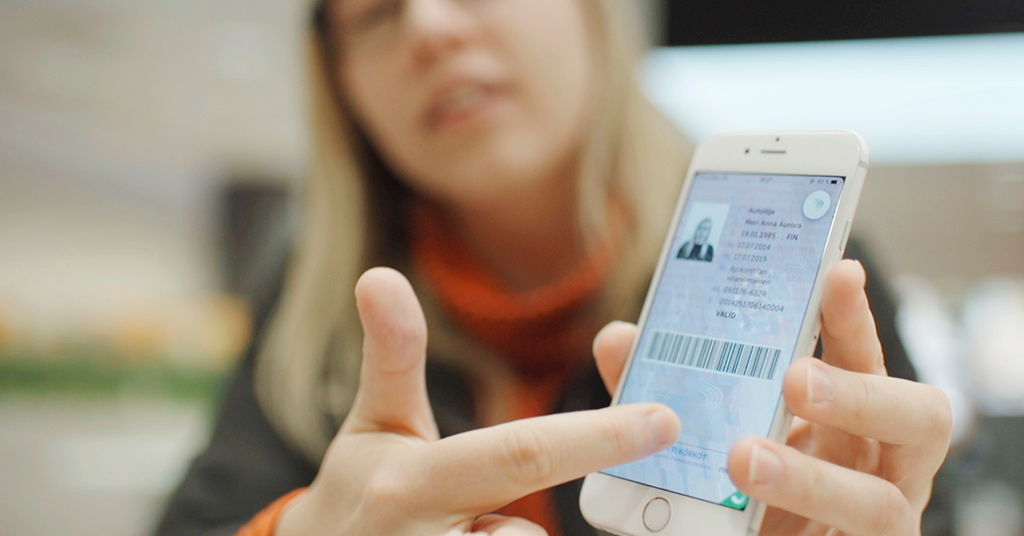
The government wants to introduce Digital ID in Ukraine.
In Ukraine, more and more functions are being developed and launched for users of mobile devices - from mobile banking to electronic rights and student rights. Also, by the end of the third quarter of 2020, the government will develop and submit for approval by the Verkhovna Rada a law "On electronic voting", thanks to which Ukrainians will be able to vote in presidential and parliamentary elections using mobile devices. By the way, Egor Avetisov, director of innovation at PrivatBank, previously announced these capabilities of smartphones .
In general, back in May of this year, President Volodymyr Zelenskyy announced the Country project in a smartphone, which will provide citizens with the opportunity to communicate and conduct transactions with the state, as well as provide tools for getting involved in the country's governance. Within the framework of this project, the Ministry of Digital Transformation of Ukraine, in particular, plans to legalize cryptocurrency.

From biometrics to mPOS terminals: The most technologically advanced smartphones of our time.
According to a study by the GfK Group, from January to June 2019, consumers around the world bought smartphones for a total of 210 billion euros. Users are expected to spend about 1 trillion euros in 2019 on various technological innovations. More than 43% of this amount will be spent on the purchase of smartphones with higher specifications.
The PaySpace Magazine editors have made a selection of the most technologically advanced smartphones of our time, supporting blockchain technology, biometrics and crypto wallets, advanced cameras, screens of unusual design and more.
Xiaomi Mi Mix Alpha - "wrapped" screen, 27-megapixel photos and support for 5G

New Xiaomi smartphone with a "wrapped" screen.
The Chinese company Xiaomi has presented a concept smartphone Mi Mix Alpha. The peculiarity of the device is the screen "wrapped" around the body, the area of which is 180% of the size of the phone. The new Mix Alpha is equipped with a 108-megapixel image sensor Samsung, developed in conjunction with Xiaomi. As with other recent high-resolution Samsung sensors, pixels are combined into 2x2 squares to provide better low-light sensitivity, allowing the camera to produce 27MP images. Other characteristics of the phone include a Qualcomm Snapdragon 855+ processor, 5G support, 12 GB of RAM, 512 GB of physical memory, and a 4050 mAh battery.
Samsung Galaxy Note 10 Plus - 3D camera and wide-angle 77-degree lens

3D photo from Galaxy Note 10 Plus.
The flagship Galaxy Note 10 Plus is equipped with two 12MP and 16MP cameras, as well as an additional 3D TOF camera with a depth sensor. In particular, the TOF camera provides functions for 3D scanning of objects and rapid measurement of objects with the camera.
While Red has introduced a separate 2.7kg Lithium 3D camera for its Hydrogen One smartphone, the Galaxy Note 10 Plus boasts a built-in device.
By the way, the South Korean company became the first manufacturer to release a mobile phone that could create 3D images. All thanks to the dual camera, which was equipped with the Samsung SCH-B710, released in 2007.
Flexible Screen Smartphones - Galaxy Fold and FlexPai

Samsung Galaxy Fold smartphone with foldable screen.
On February 20, Samsung unveiled a foldable smartphone at its Galaxy Unpacked event. Thanks to the unique Infinity Flex display, the Galaxy Fold can be flexed. This allows you to turn your phone into a small tablet by simply opening the device like a book.
When folded, the thickness of the smartphone is 17 mm, and when open, it is 6.9 mm. The phone is powered by two batteries, the total capacity of which is 4380 mAh. Another feature of the device is the presence of six cameras, which are located on three sides - the standard front and back, when the smartphone is folded, and another camera is located on the inside of the device when open.
The Chinese corporation Royole became a pioneer in the production of flexible displays. Back in early 2019, the company unveiled the FlexPai phone, the world's first smartphone with a foldable AMOLED display. The device has a 7.8-inch diagonal and runs on the Android operating system. If the AMOLED display is folded down, there is still a small gap between the two halves of the screen, and all content will move to one side of the display.
FinTech: smartphones as mPOS terminals

Samsung has turned its smartphones into POS terminals.
South Korean company Samsung has launched Samsung Pay Touch, but it is only available to small businesses in Canada. The app turns Galaxy smartphones into POS terminals that can accept contactless payments. In general, the new function is focused on the commercial segment.
The biggest benefit of Samsung Pay Touch is that no additional hardware is required to install it. Merchants need to have a Galaxy smartphone, download the app, and register. Note that the list of smartphones that support the app includes the Galaxy S8 / S8 +, Note8, S9 / S9 +, Note9 and S10e / S10 / S10 +, and the Galaxy Note 10.
In addition, Samsung is currently working with Visa and Fiserv First Data's credit card business to jointly develop a system that will allow merchants to accept contactless payments of any amount directly to their smartphones. At the same time, sellers will not need to use additional equipment.
It is also reported that by the end of 2019, the Payment Card Industry Security Standards Council (PCI SSC) will introduce a standard for accepting contactless payments from a smartphone. Thanks to this, merchants will soon be able to accept payments by cards and NFC gadgets from their phones or tablets. A similar solution was launched in Ukraine, but it does not depend on the model of the smartphone on which it is used.
Technology support: biometrics, blockchain and artificial intelligence

Blockchain smartphone Samsung.
Tech giant Samsung has released a new blockchain-enabled KlaytnPhone smartphone. The device is already available for purchase in South Korea. The phone was reportedly co-developed by Samsung with Ground X, a subsidiary of the Kakao messaging app, which recently launched the Klaytn blockchain. KlatynPhone is a version of Samsung's flagship Galaxy Note 10 phone, but comes with a cryptocurrency wallet installed, DLT-enabled apps, and free KLAY tokens.
In 2019, Sirin Labs, founded by Kazakh investor Kenas Rakishev, released the Finney crypto smartphone announced a year earlier. Sirin Labs Finney has a built-in hardware wallet powered by Sirin OS, an operating system that is a modified version of Android 8.1. Other advantages include decentralized storage. The smartphone uses the so-called "cold wallet", which does not need an Internet connection and which can be, for example, flash drives.

IPhone 13 Pro and Pro Max smartphones.
The new iPhone 13 Pro and Pro Max smartphones feature Deep Fusion, which uses machine learning to enhance low-light shots. When photographing, this technology takes several frames, and then combines them into one image to capture as much detail as possible. In addition, the company recently introduced a new option that allows American students to add their ID cards to Apple mobile wallets. This feature is supported by iPhone 6 and 6 Plus smartphones and newer models.
Today, many modern smartphones have biometrics. This system includes various methods of recognizing people - from fingerprint identification to scanning the face and cornea of the owner of the phone.
So, the Beebom website, in March 2019, presented its top best devices with face recognition function 17 devices, including: Apple iPhone XS, Huawei Mate 20 Pro, OnePlus 6T, Poco F1, Asus ZenFone 5Z, Realme 2 Pro, Honor 10, Samsung Galaxy S9 / S9 +, Oppo Find X, Samsung Galaxy A8 +, LG V30, LG G7 + ThinQ, Samsung Galaxy Note 9, Redmi Note 6 Pro, Vivo V9, Huawei P20 Pro and P20 Lite and Asus ZenFone Max Pro M1.

Face recognition function LG V30.
New Apple iPhone 13 and iPhone 13 Pro, which went on sale on September 20, also have Face ID technology. According to the developers, this type of authentication has been improved and now works 30% faster. Due to facial recognition technology, newer iPhones lack a fingerprint reader.
Retinal scan authentication is supported by smartphones of brands Samsung, Nokia, Lumia, LYF, Tecno, HTC, Itel and TCL, in particular: Nokia A1 Plus, LYF Earth 2, Tecno Phantom 6 Plus, Microsoft Lumia 950 XL and 950 XL Dual SIM , HTC U12, TCL 560, Microsoft Lumia 950, Itel SelfiePro it1520 and Samsung Galaxy Note 10, Galaxy Note 9, Galaxy Note 8, Galaxy Note 7, Galaxy S9 and S9 Plus, Galaxy S8 and S8 Plus, Galaxy Note Fan Edition, Galaxy S10 X as well as Galaxy S8 Active.

Retinal scan on Galaxy Note 7.
The fingerprint reader can be located on the front (all iPhone models from 5S to 8/8 +), back (LG V10, Samsung Galaxy S5 Mini, Galaxy S8 and Galaxy S8 +) or side (Moto Z3 Play) of the device, or be built into the screen smartphone. Also, some models use ultrasonic fingerprint sensors for authentication (Samsung Galaxy S10).
Other phones that support fingerprint biometrics include Google Pixel 3 XL, Apple iPhone Xs Max, Apple iPhone Xr, Xiaomi Poco F1, Samsung Galaxy Note 9 SD845, LG V10, OnePlus 6, OnePlus 7T, Sharp Sense3 Plus, Sharp Sense3, Xiaomi Redmi 8A, Sharp Aquos Zero2, Vivo U3x, Vivo U10, Xiaomi Mi MIX Alpha, etc.
Prospects for the future

LG has patented a smartphone with a flexible display.
LG smartphones with flexible display, 16 cameras and crypto wallet. In 2019, South Korean tech giant LG patented a flexible display smartphone. The company sent the corresponding application back in October 2018, and in September it became known that in the near future LG will release a blockchain smartphone. In particular, at the end of July 2019, LG representatives announced that the company was working on the creation of a cryptocurrency wallet and applied for the registration of the ThinQ Wallet trademark.
In addition, a year earlier, the company filed a patent for the production of a smartphone equipped with 16 cameras with different curvatures. The main goal of the technology is to create a moving image captured by multiple lenses.
Solar powered phone. The Chinese company Xiaomi has patented a frameless smartphone with a built-in solar battery . The device is located at the back of the phone and occupies a fairly large panel area.

Samsung solar-powered smartphone concept.
Recognition of silent speech. In the fall of 2018, a voice assistant for smartphones was announced that can recognize speech by lip movements, even when a person is not making sounds. The project, developed by Chinese scientists from Tsinghua University, was created using two neural networks. One neural network monitors the position of 20 control points describing the shape of the lips and the level of mouth openness using the built-in smartphone camera. The second one uses all the information received for speech recognition. At the moment, the application supports 44 commands.
Smartphone with three displays. Samsung has patented another unusual smartphone design - a phone with three displays located one behind the other. The smartphone consists of three identical parts, connected by a metal rod that allows the displays to be rotated left and right. At the same time, buttons or cameras were not noticed on the smartphone, and the back panel is completely smooth. There is a hole for the earpiece on the front panel. Despite the registration of the patent, it is still unknown when such a gadget will go on sale.

Samsung smartphone with three displays.
Smartphones will become so popular that by 2024, about 3 billion people, or 40% of the world's population, will use digital ID cards downloaded to mobile phones, according to a report by British research firm Juniper Research.
Another study claims that mobile technology has a major impact on the growth of financial inclusion in the world. Thus, according to the Mastercard company, 15 countries account for more than 60% of the financially excluded population. Among them, 607 million people are mobile phone owners who still do not have a bank account. Thus, thanks to mobile technologies, a large part of the population can easily access the benefits of financial inclusion.
However, the largest mobile phone maker does not share the positive outlook for the smartphone c. So, according to the head of Samsung Electronics Ko Dong Jin, the innovative product of Samsung Galaxy Fold may be the beginning of the end for smartphones, and 5G technology will shift the mobile phone industry in favor of wearable devices. Samsung Co. sees the future in interconnected and multi-screen devices that can help people complete everyday tasks at home, in the car and in the office.
Smartphones and Ukraine

The government wants to introduce Digital ID in Ukraine.
In Ukraine, more and more functions are being developed and launched for users of mobile devices - from mobile banking to electronic rights and student rights. Also, by the end of the third quarter of 2020, the government will develop and submit for approval by the Verkhovna Rada a law "On electronic voting", thanks to which Ukrainians will be able to vote in presidential and parliamentary elections using mobile devices. By the way, Egor Avetisov, director of innovation at PrivatBank, previously announced these capabilities of smartphones .
In general, back in May of this year, President Volodymyr Zelenskyy announced the Country project in a smartphone, which will provide citizens with the opportunity to communicate and conduct transactions with the state, as well as provide tools for getting involved in the country's governance. Within the framework of this project, the Ministry of Digital Transformation of Ukraine, in particular, plans to legalize cryptocurrency.
